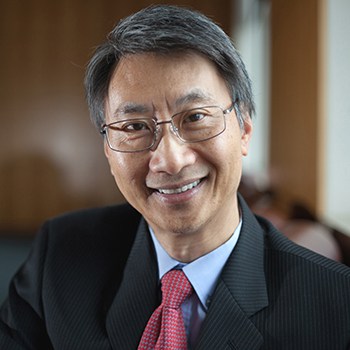
CEE Prof. Victor Li Receives Top Global Ranking for Building and Construction Research
Ranking is based on authorship of research, citations and additional factors

Ranking is based on authorship of research, citations and additional factors
U-M CEE Professor Victor Li, the E. Benjamin Wylie Collegiate Professor and James R. Rice Distinguished University Professor, is ranked in the number-one position globally among a list of research authors in the area of Building and Construction for 2021 and 2022. He is also ranked first in the sub-area of Materials in Construction.
Stanford University and Elsevier compile an annual list of global researchers, based on the authorship of research, the number of papers published globally in different areas, and the level of impact of research. Other factors–including the number of papers published, the number of citations received and used by others, plus the number of years the author has been writing–are considered in the ranking process. Calculations focus on author profiles, with the end date of September 1, 2022, for the year. This list recognizes the top 2 percent of research authors–approximately 30,000 researchers–in a variety of subject areas.
Prof. Li pioneered bendable concrete–officially known as engineered cementitious composite, or ECC–through his research at UM. “This bendable concrete is being used worldwide in bridges, buildings, tunnels–large scale civil infrastructures,” he said. “What distinguishes this concrete from conventional concrete is that it can experience large loading, such as in earthquakes, and it will absorb the energy and protect the building. It is very resilient. In an earthquake site, conventional buildings have experienced failure and collapse despite steel reinforcements. This bendable material creates additional safety for occupants by delaying and limiting the damage to the building.”

Prof. Li noted that in the last few years, his team has been working to make a low-carbon model in collaboration with the environmental group in CEE that helps the construction industry become greener by permanent sequestration of carbon dioxide in the production of ECC. “As we move forward, we need to make infrastructure more benign to our environment, and more harmonious with nature. The focus of our efforts are the materials’ performance, characteristics and composition of materials and how we can translate them into infrastructure with lower carbon footprint, while maintaining the advantages of structural resiliency.”
In addition to aspiring to create a net-zero-carbon bendable concrete, Prof. Li’s group, in collaboration with the Digital Fabrication Lab in the School of Architecture, leads in 3-D printing of bendable concrete structures. One of the orange robots in the CEE Structures Lab is used for printing structures made of bendable concrete.
“There are more than 500 groups around the world following our research, from Europe to Asia to the United States and other parts of the world,” Prof. Li said. “That explains part of why our publications’ citations are high, and it reflects the broad interest to further advance this technology. We invented this bendable concrete, but there are many groups doing great work to drive the technology forward, to help globally to reduce carbon and to make structures safer.”
Prof. Li noted that his global recognition is a “humbling distinction.” He added: “I am happy to see so many of my colleagues on this list. Any technology cannot be successful through the work of a single person. It requires collaboration among many colleagues, institutions, and industrial concerns, without whom we would not be at this stage. Many of our current and former students and postdocs have contributed to this success and will continue to push the technology forward through their future work. The ultimate goal is to see harmonious coexistence between the built and the natural environment, as this technology becomes more commonplace throughout the world.”
In addition to Prof. Li who is at the top of the Building and Construction category, CEE’s Vineet Kamat, the John L. Tishman Family Professor of Construction Management and Sustainability; Professor Will Hansen, and Carol Menassa, Professor and John L. Tishman Faculty Scholar, are also in the top 2 percent of this category. In total, CEE has more than 20 emeritus and current faculty members in the leading 2 percent of their respective areas of focus.
Here is the link to 2022 data, and the link for 2021 data.

Marketing Communications Specialist
Department of Civil and Environmental Engineering